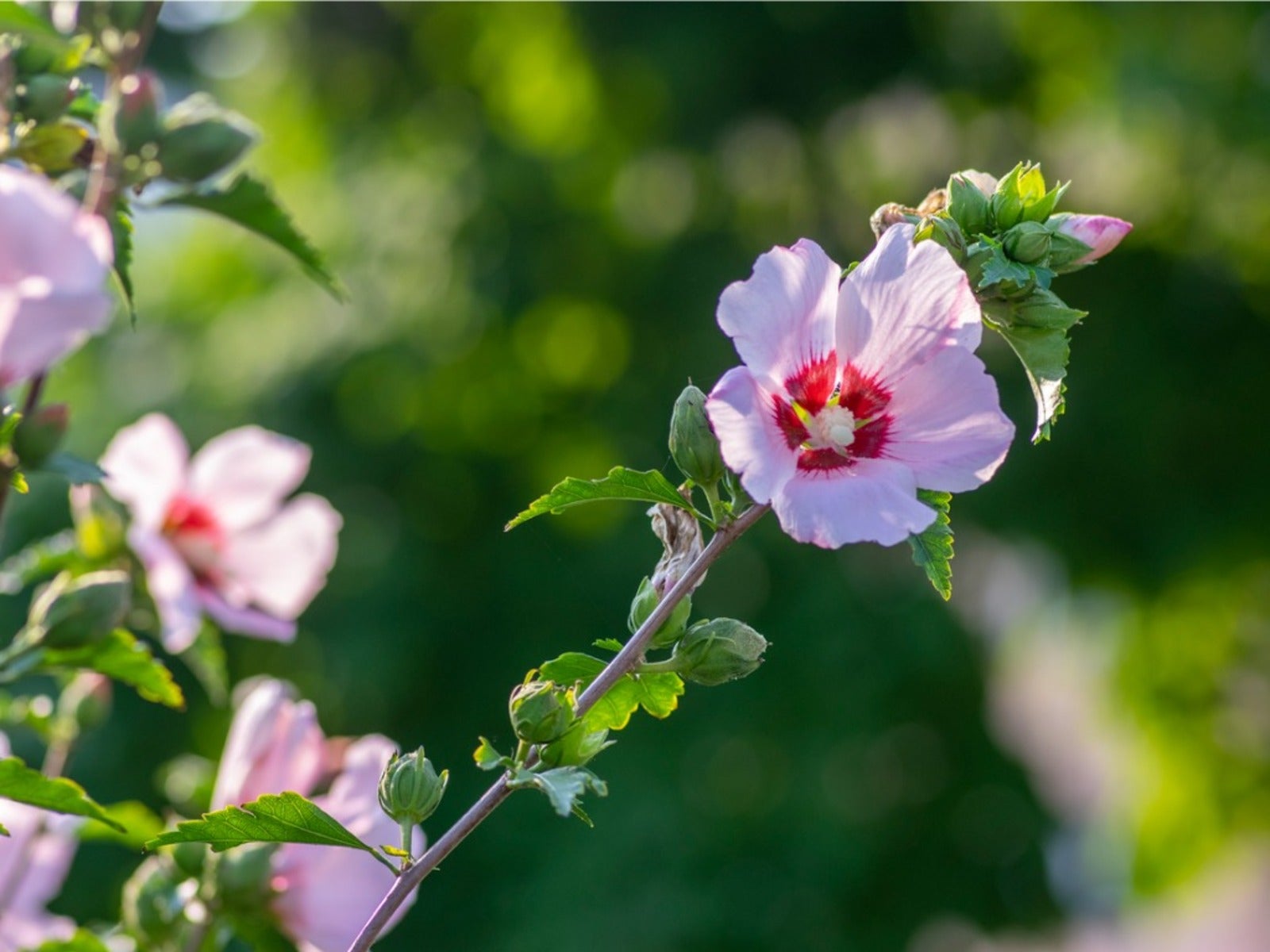Pruning Rose Of Sharon Shrub: Tips On How To Trim A Rose Of Sharon


Teo Spengler
Rose of Sharon is a large shrub that grows quickly and can reach 12 feet (3.6 m) in both directions, offering oodles of large pink or white flowers in summer. Pruning a Rose of Sharon isn’t absolutely necessary, but it will help the plant maintain its shape and encourage larger blossoms. Given its speed of growth, pruning a Rose of Sharon tree may be a great addition to your task list for next spring.
Meet the Rose of Sharon
Rose of Sharon (Hibiscus syriacus) is an erect shrub, producing bright pink, blue, purple or white hibiscus-like blossoms. They fill the deciduous shrub’s branches in late June, July and August. The flowers open in the day and close at night. A member of the mallow family, the bush is hardy to Zone 5. It can grow to 10 feet (3 m) or more in the right conditions.
Should You Prune Rose of Sharon Bushes?
Pruning Rose of Sharon is more an option than a requirement. The plant does accept hard pruning, and some gardeners like to prune it back significantly in order to make the plant more compact.
It’s a matter of preference. If you decide to do a hard prune of your Rose of Sharon, your plant will produce fewer blossoms but larger ones. If you prune the shrub minimally or don’t prune it at all, you will have many more flowers but they will be smaller.
How to Prune Rose of Sharon
Younger shrubs may benefit from a light pruning, while older specimens may need more extreme branch removal. When you plan to do a Rose of Sharon pruning, stand back and take a look at the overall form. Young shrubs grow upward and have an erect form, but older specimens may have attractive, drooping branches. To maintain either form, remove wood to the first or second node (bump on the limb).
Remove branches that appear to have gone awry or are growing in the wrong direction. Top, upright growth may be pinched back to encourage the growth of side branches. Remove the oldest and tallest stems first, thinning out branches that may be blocking sunlight or preventing air circulation through the plant.
If the shrub’s growth appears untidy and out of hand, your cuts may need to be further down the stem, and should remove any weak branches. Using sharp pruners, remove dead stems at ground level. Take off any damaged branches just above the damage, leaving the healthy portion to grow back.
Sign up for the Gardening Know How newsletter today and receive a free copy of our e-book "How to Grow Delicious Tomatoes".
Be sure to remove any suckers sprouting from the bottom of the trunk, growing from the roots or sprouting in surrounding areas. and only prune back healthy branches to the node which allows the desired appearance. As a rule of thumb, allow 8 to 12 inches (20-31 cm) between inner branches for the best flowering display.
Be aware that Rose of Sharon can become invasive. To reduce spread of this shrub, clip off its seed capsules in autumn before they mature.
Renewal Pruning
If your Rose of Sharon bush is old and has not been pruned in several years, renewal pruning Rose of Sharon shrub offers the opportunity to start over. In late autumn or winter, cut older trunk branches down by two thirds of the tree’s height. Some gardeners prune them back even closer to the ground.
Starting over with this rejuvenation pruning allows a newly formed shrub to develop in spring when new growth emerges. This type of pruning may result in a loss of Rose of Sharon blooms the following year, but is well worth the loss for a new start for the shrub.
When to Prune Rose of Sharon
Pruning Rose of Sharon serves a variety of purposes. It’s a good idea to remove any branches killed or damaged by winter weather in early spring since the plant leafs out in the late spring.
However, the Rose of Sharon shrub flowers on growth from the current year, so you have several choices as to when to prune. While the best time to do most kinds of pruning is late winter or early spring, you can also prune this shrub in late fall, in winter after leaves drop, or in early spring before its new buds form.
If you want to shape the plant, do this in the early years of the shrub’s life. Give Rose of Sharon plants a hard prune in late winter to maintain a more compact shrub, but remember that this will produce larger blooms, but fewer of them.
Should You Deadhead a Rose of Sharon?
Given the wealth of blossoms produced by a Rose of Sharon, you’ll be glad to learn that deadheading, or removing spent blossoms, is not required. Generally, the individual blossoms don’t last very long and the wilted blossoms fall, but feel free to snip off any wilting flowers clinging to the shrub.
Pruning Essentials
- Consider a sharp pair of shears like the ever-popular Fiskars ⅝” Bypass Pruner from Amazon
- Protect your hands from thorns with a pair of puncture-resistant gardening gloves from Amazon
- Collect garden scraps and compostables in a lawn garden bag from Amazon

Becca Badgett was a regular contributor to Gardening Know How for ten years. Co-author of the book How to Grow an EMERGENCY Garden, Becca specializes in succulent and cactus gardening.
- Teo SpenglerWriter